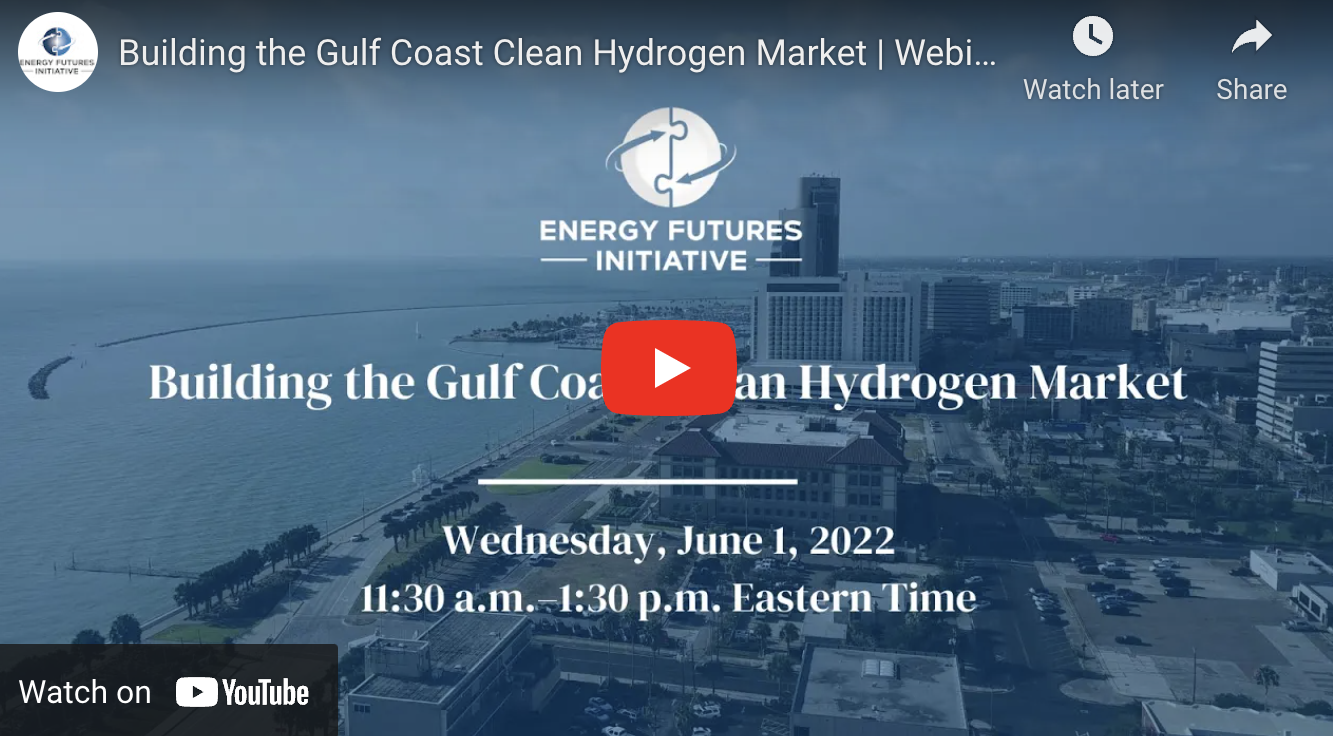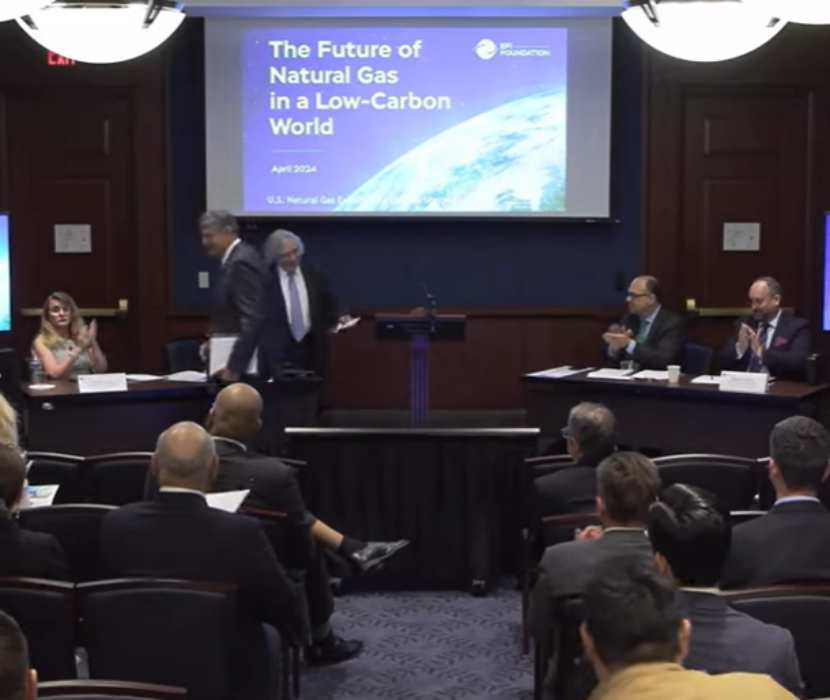
The potential for clean hydrogen as a low-carbon energy source is gaining momentum. Hydrogen is already produced at commercial scale for end uses in methanol production, ammonia production, and oil refining. Building an industry to supply clean hydrogen as a fuel for the energy sector could reduce carbon dioxide (CO2) emissions by up to 16% by 2050, according to the Fuel Cell and Hydrogen Energy Association. It could also generate $140 billion in revenues and 700,000 jobs by 2030.
The nearest step to a cleaner hydrogen industry is to produce hydrogen from natural gas (CH4), as industries already do, but to capture and store the carbon. This process could provide the foundation for another clean hydrogen pathway—producing hydrogen from water, with zero greenhouse gas emissions (and leaving only oxygen as a byproduct). We need to look no further than the U.S. Gulf Coast for a region with strong potential for both.
The Energy Futures Initiative (EFI) convened Gulf Coast hydrogen stakeholders in a public workshop and private roundtable to see what they had to say about the potential for a clean hydrogen industry in their region. We published these insights in a new summary report. Stakeholders said the Gulf Coast is a prime region for clean hydrogen because it already has many necessary elements to form a market: infrastructure, workforce, and natural resources.
Infrastructure: The world’s largest hydrogen supply pipeline network is located in the Gulf Coast (owned by industrial gases company Air Products). Added to that, more than 90 percent of the United States’ total dedicated hydrogen pipelines are in Texas and Louisiana. The Gulf Coast region is also home to a substantial portion of the country’s CO2 pipelines and six of the 10 largest U.S. ports (which have facilities for liquefying, storing, and loading gases). Combined, nearly all of the country’s infrastructure for hydrogen production is located in the Gulf Coast, making it an ideal region to start a clean hydrogen hub. And while other regions, such as the Ohio River Valley, have hydrogen operations, the Gulf Coast is the only one with a market of multiple co-located suppliers and buyers.
Workforce: Beyond hydrogen and CO2 pipelines, the Gulf Coast’s hydrogen market has the workforce necessary for a clean hydrogen hub. In 2020, manufacturing employees of the chemicals and petroleum industries numbered 881,000 in Texas, 130,000 in Louisiana, and 146,000 in Mississippi. A skilled regional workforce is critical to developing an industry for clean hydrogen production, distribution, and use, and the existing Gulf Coast workforce has these skills. Most hydrogen activities proposed or already in operation also rely on partnerships with petrochemical companies, utilities, and infrastructure companies—making the existing workforce key.
Natural Resources: The Gulf Coast—especially Louisiana and Texas—is also home to onshore and offshore salt domes that can be used for geologic storage of CO2 emissions. Hydrogen is currently produced from natural gas, but CO2 emissions result during production when the gas reacts with water vapor. Sites for geologic storage are essential for lowering the carbon emissions associated with our current hydrogen industry. The Gulf Coast possesses natural gas and water resources, and it is also rich in wind power that could eventually be used for producing hydrogen from water by renewable or clean energy. This combination of resources make the Gulf Coast ideal for short-term and long-term clean hydrogen development.
Clean hydrogen is emerging as a critical energy source on the path to decarbonization, with the potential to become the “new natural gas,” according to EFI CEO Ernest Moniz. Although significant innovation is required to scale clean hydrogen, the Gulf Coast is a singular location where many initial steps toward a clean hydrogen hub are already complete, as Gulf Coast stakeholders underscored during recent EFI events.
Hydrogen is not new in the Gulf Coast, and clean hydrogen could transform the region into a clean energy powerhouse.
– Jaycee Scanlon, Communications Fellow
with contributions from Nick Britton (Research Associate), Tatiana Bruce da Silva (Project Manager & Contributing Senior Analyst), and Alicia Moulton (Deputy Director of Communications)
Supplemental Materials
Related Content
(Share this post with others.)









